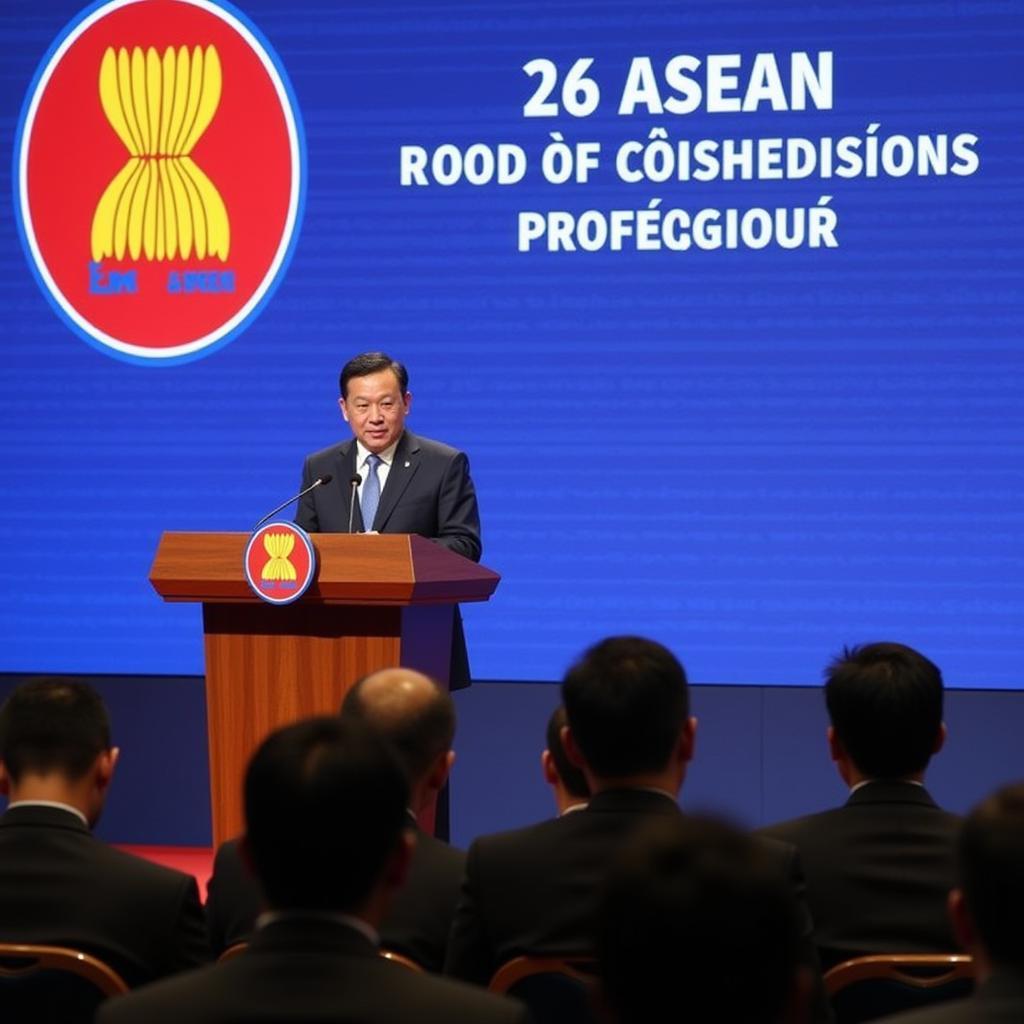The term “ASEAN arms race” has become increasingly prevalent in recent geopolitical discourse, raising concerns about the future stability of Southeast Asia. As nations within the region modernize their militaries and bolster defense capabilities, it begs the question: Is this a natural progression for a dynamic region asserting itself on the world stage, or a dangerous trend with the potential to destabilize the region’s delicate balance of power?
Historical Context: Understanding the Roots of Military Buildup
To fully grasp the implications of the ASEAN arms race, it’s crucial to understand the historical context that underpins it. Southeast Asia has witnessed its fair share of conflict, from colonial struggles to Cold War proxy wars and internal strife. This history has instilled a sense of vulnerability among ASEAN nations, prompting them to prioritize national security.
Furthermore, the region’s strategic importance, nestled between the Pacific and Indian Oceans and home to vital shipping lanes, makes it a focal point for great power competition. This dynamic has often seen external actors fueling regional arms races, as was the case during the Cold War.
Drivers of the Modern Arms Race: A Multifaceted Issue
The current iteration of the ASEAN arms race is driven by a complex interplay of factors:
- Economic Growth: Rapid economic development in several ASEAN countries, particularly Vietnam, Indonesia, and Malaysia, has provided them with the financial means to invest in advanced weaponry.
- Territorial Disputes: The South China Sea dispute, involving overlapping claims by several ASEAN members and China, has heightened tensions and fueled military spending.
- Non-Traditional Security Threats: The rise of transnational terrorism, piracy, and natural disasters has prompted nations to invest in equipment and training to address these evolving challenges.
Key Players and Their Capabilities: A Shift in the Balance?
While the term “arms race” suggests an even playing field, the reality is more nuanced. Within ASEAN, there are clear front runners in terms of military modernization:
- Singapore: Boasting a small but technologically advanced military, Singapore consistently ranks high in global military power indices. Its strategic location and focus on innovation make it a formidable force within the region.
- Vietnam: Vietnam has been steadily modernizing its military, particularly its naval capabilities, as demonstrated by the acquisition of submarines and advanced warships. This buildup is widely seen as a response to China’s assertiveness in the South China Sea.
- Indonesia: As Southeast Asia’s largest economy and most populous nation, Indonesia has embarked on an ambitious military modernization program. Its focus on bolstering its maritime defenses reflects its archipelagic nature and desire to protect its vast exclusive economic zone.
The China Factor: An Inescapable Reality
No discussion about the ASEAN arms race can be complete without addressing the elephant in the room: China. Beijing’s growing military might and assertive posture in the South China Sea have undoubtedly been a catalyst for increased defense spending among ASEAN nations. This dynamic has led to a complex security dilemma, where China’s actions are simultaneously perceived as a threat and a driver of militarization.
Implications for Regional Stability: A Delicate Balancing Act
The ASEAN arms race presents both opportunities and challenges for regional stability. On the one hand, enhanced military capabilities can deter conflict and promote a more equitable balance of power. This, in turn, can encourage dialogue and cooperation on shared security concerns.
However, unchecked military buildup carries inherent risks. It can fuel mistrust among ASEAN members, exacerbate existing tensions, and potentially escalate into conflict, especially in the context of unresolved territorial disputes. Furthermore, excessive military spending can divert resources from crucial social and economic development programs, hindering the region’s overall progress.
The Way Forward: Towards a Secure and Stable ASEAN
Navigating the complexities of the ASEAN arms race requires a multi-pronged approach:
- Strengthening Regional Mechanisms: ASEAN must bolster its existing security architecture, including the ASEAN Defence Ministers’ Meeting (ADMM) and the ASEAN Regional Forum (ARF), to foster greater transparency, confidence-building measures, and practical cooperation on security challenges.
- Promoting Dialogue and Diplomacy: Open and frank dialogue between ASEAN members, as well as between ASEAN and China, is essential to address the root causes of mistrust and find peaceful resolutions to disputes.
- Focusing on Non-Traditional Security: While traditional security concerns remain important, ASEAN must prioritize addressing non-traditional security threats like terrorism, cybercrime, and climate change, which pose a direct threat to human security and regional stability.
- Engaging External Partners: ASEAN should leverage its partnerships with external actors, including the United States, Japan, Australia, and India, to enhance its security capacity, promote responsible behavior, and maintain a stable regional balance of power.
Conclusion: Shared Responsibility for a Shared Future
The ASEAN arms race is a complex issue with no easy answers. It is a product of both internal and external factors, reflecting the region’s dynamic geopolitical landscape. While the pursuit of national security is a legitimate right of every nation, it must be pursued responsibly and in a way that does not undermine regional stability.
Ultimately, ensuring a secure and prosperous future for Southeast Asia requires a commitment to dialogue, cooperation, and a shared vision of a peaceful and prosperous ASEAN community. By working together, ASEAN nations can navigate the challenges of the arms race and build a more secure and stable region for generations to come.
FAQs About the ASEAN Arms Race
1. Is the ASEAN arms race a new phenomenon?
While military spending has increased in recent years, the concept of an arms race in Southeast Asia is not new. The region has a history of military build-ups, particularly during the Cold War era.
2. Which ASEAN country has the most powerful military?
While military strength is a complex issue to quantify, Singapore is often ranked as having the most advanced and capable military in Southeast Asia.
3. What is ASEAN doing to address the arms race?
ASEAN has various platforms for dialogue and cooperation on security matters, such as the ASEAN Defence Ministers’ Meeting (ADMM) and the ASEAN Regional Forum (ARF).
4. How does the South China Sea dispute contribute to the arms race?
Overlapping territorial claims in the South China Sea have heightened tensions and fueled military modernization efforts among several ASEAN countries, particularly Vietnam and the Philippines.
5. What role can external partners play in mitigating the arms race?
External partners can help by promoting dialogue, advocating for responsible behavior, and providing capacity-building assistance to ASEAN nations.
If you need support, please contact Phone Number: 0369020373, Email: aseanmediadirectory@gmail.com or visit us at: Thon Ngoc Lien, Hiep Hoa, Bac Giang, Vietnam. We have a 24/7 customer support team.

